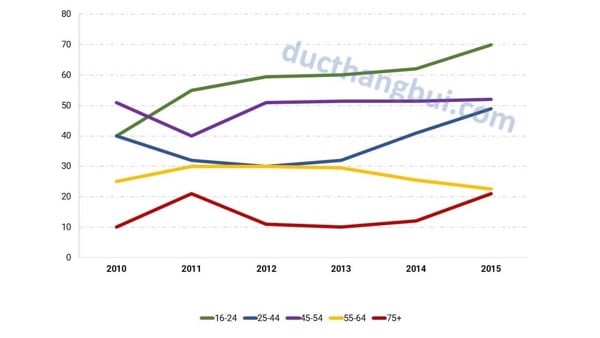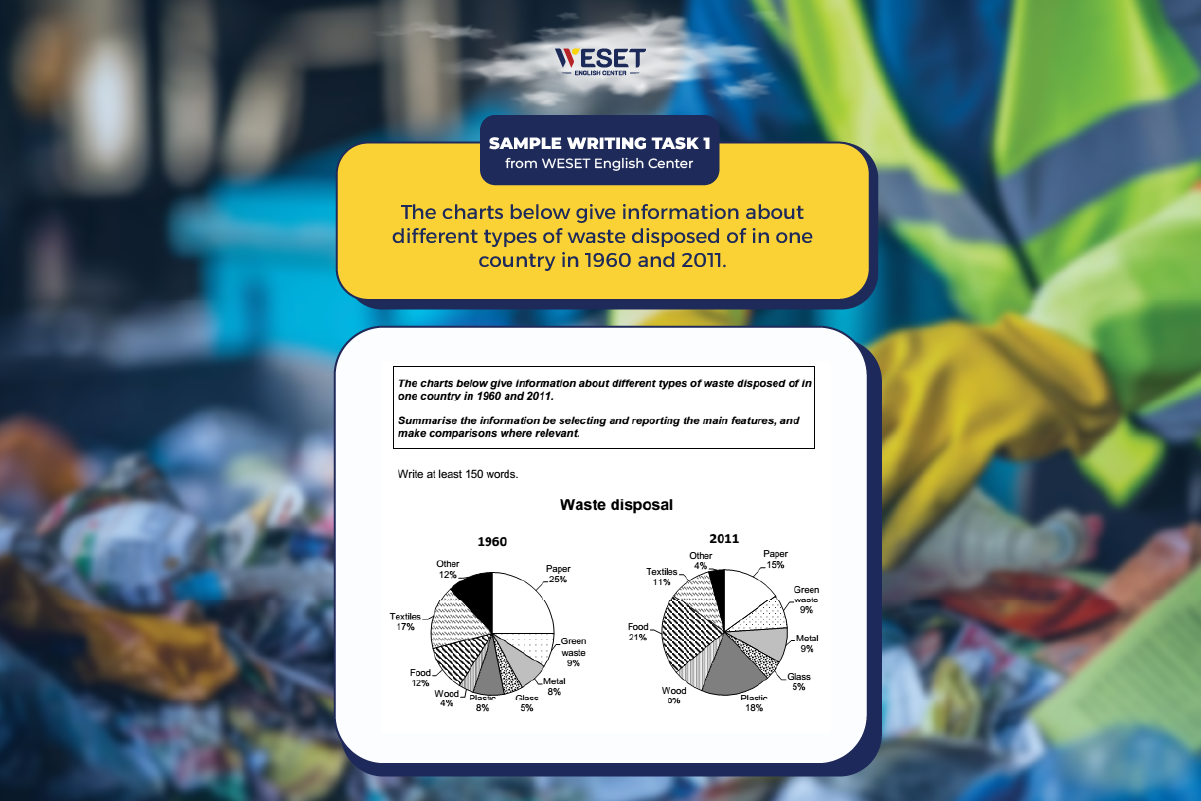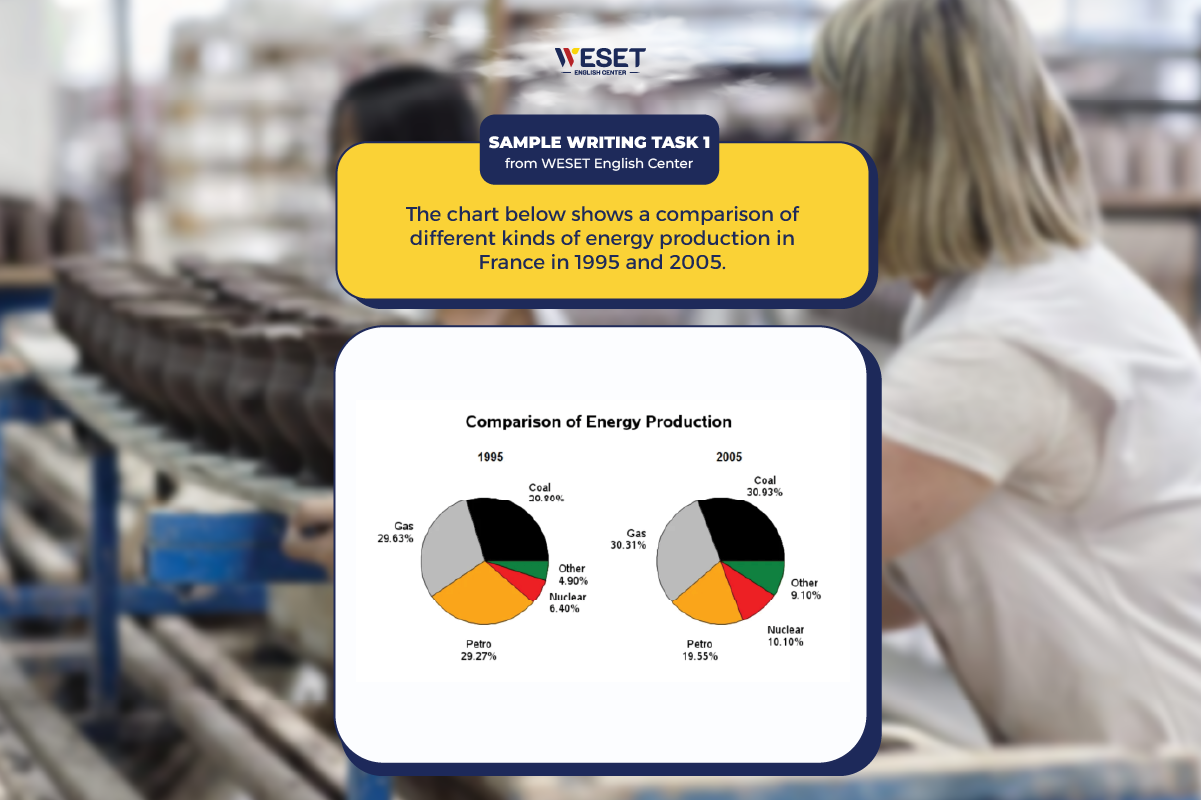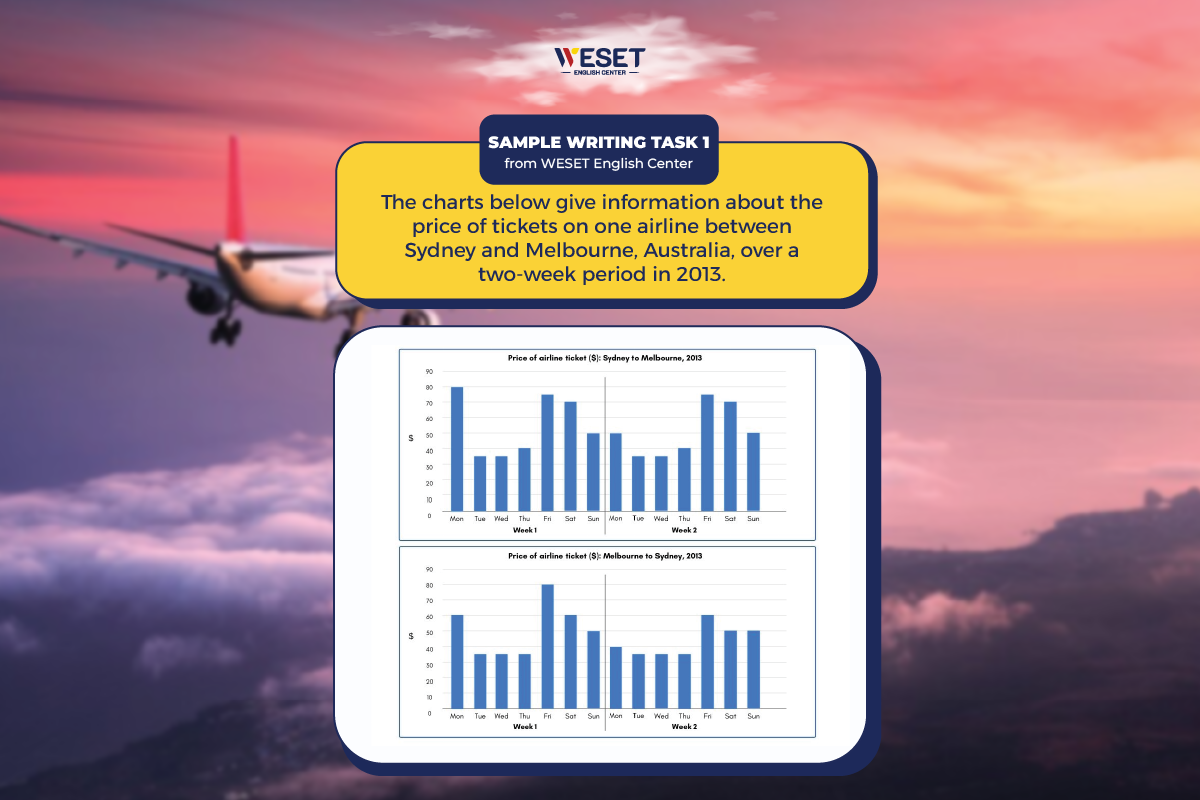GIẢI ĐỀ IELTS| SAMPLE WRITING TASK 1 (AGE GROUPS IN MUSIC CONCERTS)
- Vân Lam
- Bài mẫu IELTS Sample Writing, Bài mẫu Task 1 IELTS Writing sample, Bài thi IELTS mẫu
- 24/04/2020
MỤC LỤC
Đề bài: The graph below shows the percentage of people in different age groups in one city who attended music concerts between 2010 and 2015.
(Đồ thị dưới đây cho thấy tỉ lệ phần trăm độ tuổi của những người tham gia những buổi biểu diễn âm nhạc trong cùng một thành phố từ năm 2010 đến năm 2015.)

SAMPLE
The given line graph compares the proportion of citizens in different generations in one city that went to music concerts from 2010 to 2015.
Overall, there were contrastive trends in which the 25-44 age group saw declining proportions, as opposed to increasing tendencies of the remaining parties, with the exception of the middle age group’s stagnant attendances. It is evident that the youngest age group (16-24) had the highest attendance rate and also witnessed the greatest increase during this period. Meanwhile, people over 75 years old had the lowest participation rate.
In 2010, more than half of the people in the 45-54 age group joined in the concerts, which is the highest percentage this year. This figure dropped to 40% in 2011 and rose again to 50% in 2012, then remained stable for the rest of the period. While both 16-24 and 25-44 groups started the period with the same 40% rate among total people going to concerts, they experienced opposite transitions over the next 3 years. The number of youngest people in the city attending concerts increased gradually every year and reached 70% in 2015. In the meantime, the percentage of the ‘25 to 44’ group had a dip of around 10% to stand at 30% in 2013, then climbed to nearly 50 % in 2015.
For the remaining categories, just one out of 4 of people aged between 55-64 went to concerts in 2010 before their proportion went up slightly to 30% in 2011 and 2012, then fell and ended at about 20% in 2015. Finally, the most elderly group always had the fewest number of people joining concert events. Despite a peak in 2011 and again in 2015 at 20% each time, this figure experienced a drop to only 10% in a short period from 2012 to 2014.
VOCABULARY
stagnant: chững lại
transition: sự chuyển đổi/ thay đổi
as opposed to: trái ngược lại với
dip: giảm nhanh rồi phục hồi
party = category: nhóm người (được khảo sát trong đồ thị này)
03 BƯỚC PHÂN TÍCH BÀI MẪU HIỆU QUẢ
Bước 1: Đọc đề, xác định: Chủ đề và Dạng bài
Lưu ý: Đừng vội đọc bài, hãy tự kiểm tra bằng cách tưởng tượng nếu đi thi gặp đề này thì bạn sẽ làm như thế nào, dùng từ vựng, paraphrase đề bài như thế nào,…
Bước 2: Phân tích bài mẫu theo các nội dung sau:
- Số câu tác giả dùng trong các đoạn Mở – Thân – Kết
- Cấu trúc, từ đồng nghĩa tác giải dùng. Đây là tài liệu quý giá để bạn paraphrase đề bài đấy
Bước 3: Ghi chú và thực hành
- Cẩn thận ghi lại những gì rút ra được
- Cố gắng học các ghi chú đó trong ngày
- Tìm đề bài tương tự để làm lại với những kiến thức học được ở bài mẫu
Nhấn Đăng ký để cập nhật các bài mẫu và tips luyện IELTS từ WESET





